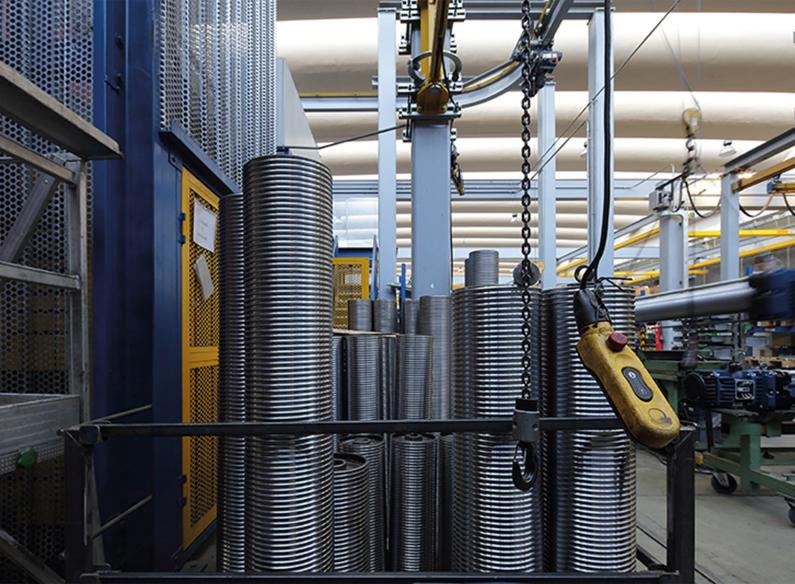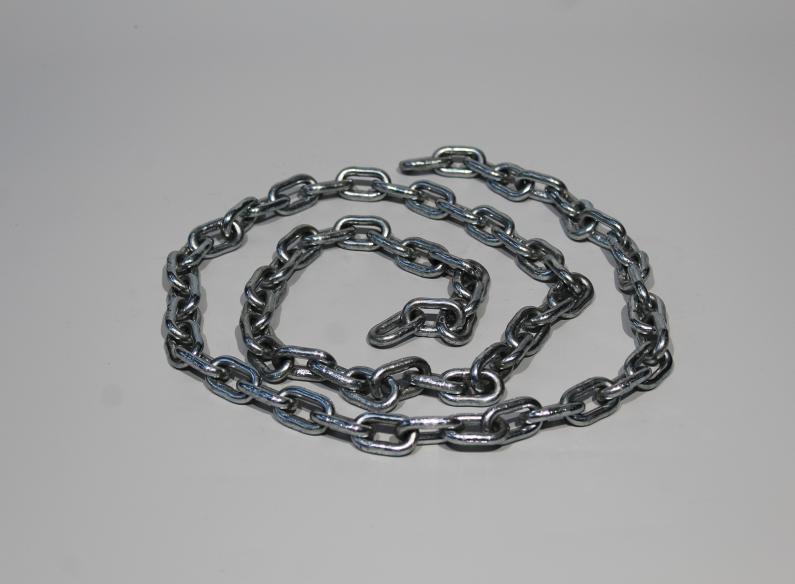Hoist chains: characteristics, safe use and maintenance
Donati Sollevamenti S.r.l. supplies consultancy and assistance for the control and maintenance of chains used in lifting systems.
The chains are an accessory of hoists and other lifting systems. Their function is to connect the pulleys to the load using hooks or suspension rings fixed at the ends.
A chain, like any other mechanical element, is subject to wear over time and to damage if not used and maintained correctly. Therefore, maintenance and use in compliance with safety procedures guarantee that the mechanical properties are not altered.
The good maintenance of a chain not only offers economic advantages, considering the cost of this accessory, it is also fundamental for the safety of the people who use lifting systems and of anyone standing or working close to it.
Here we will illustrate the characteristics of the chains and explain how and when to control their condition and what measures can be taken to avoid possible damage.
The characteristics of a chain
- Grades. The grade of a chain does not simply represent the level of resistance of the material used for its construction but, more in general, regards the mechanical properties of the finished product. The grades are identified by a letter in the case of chains with tight tolerance and by a number for chains with average tolerance. The table below indicates the average value of the breaking load for each grade:
For uniformity, this classification extends also to other lifting accessories (hooks, rings, links and shackles) to allow users to choose elements that are fully compatible with each other.Grade Average specified minimum load breaking value N/mm2 Tight tolerance Average tolerance M 4 400 P 5 500 S 6 630 T 8 800 V 10 1000 - Nominal dimension of the link. The nominal diameter of the disc of a chain link in millimetres
- Nominal pitch of the link. The internal length of a chain link in millimetres.
- Internal width of the link. Measured in millimetres.
- External width of the link. Measured in millimetres.
- Bearing capacity. This value indicates the maximum load that a chain can lift vertically in ideal conditions. It is therefore a theoretical value that does not take into consideration external circumstances (wind, rain, temperature or wear) that can lower this threshold.
The links can be welded or not. Welded link chains used for lifting operations must have a short link, with a nominal pitch/nominal dimension ratio of 3:1.
Connection links are special links at the end of the chains and are used for connection to the hooks. They have two symmetrical parts joined by a pin blocked by safety bushing.
Several chains can be connected to a single ring or link to form a sling. The slings distribute the load over several chains, thus reducing the weight lifted by a single element. All the parts of the sling must have the same grade.
According to the CE standards each chain must have a plate that indicates the grade and other fundamental characteristics for its safe use. The chain must not be used if the plate is missing or is illegible.
Correct use of the chains
The chains must be connected to the hooks or suspension rings using specific connection links. Ordinary links must never be used as connection links.
The chain must not be wound around loads with sharp edges. A sharp edge acts as a blade that can cut the edges of the links. If the only way of lifting the load it to wind a chain around it, it is possible to avoid direct contact with the edges using wood or rubber spacers.
The chain of a hoist or another lifting system must not be used to move a load horizontally. The load must be positioned vertically to the system. If the system cannot be moved at the sites on a track or using a mechanical boom, then the load must be moved using a trolley or fork-lift truck.
The load must be lifted and lowered gradually. Sudden lifting or release cause stresses that can damage the links.
Frequency of lifting chain controls
To ensure the safety of the personnel and the good conservation of this accessory, the chains must be inspected with the following frequencies:
- Daily inspections;
- Periodic inspections;
- Extraordinary inspections.
Daily inspections
The chain is inspected every day by the personnel assigned to the use of the hoist or lifting operations.
The inspection is visual and has the aim of identifying damage and evident signs of wear or the presence of knots. A knot must always be undone because it subjects the chain links to extraordinary stresses, causing deformation and weakening them.
On this occasion you can ascertain the state of lubrication and possibly re-lubricate it with a thin layer of oil on the dry parts.
Periodic inspections
A periodic inspection must be carried out by qualified personnel at least once every three months or as indicated by the manufacturer. On this occasion, the personnel must check, both visually and with measuring instruments, for the presence in the links of:
- Bends or deformations;
- Reductions in diameter. The chain must be replaced if a link is smaller than 10% of the original size;
- Cuts, cracks (signs of fractures) or signs of wear;
- Signs of oxidation and corrosion.
It is important to check if:
- The links are perfectly mobile and well lubricated;
- The chain is longer than the original measure. The chain must be replaced if the elongation exceeds 5.
- The connection links are perfectly jointed when the pin is fully inserted and locked.
Before the inspection, the chains must be cleaned to eliminate any grease, dust or scale that may prevent correct measurement or conceal damage.
The results of this inspection must be recorded in a report to be stored at the workplace for at least three years.
Extraordinary inspections
The extraordinary inspection of a chain must be carried out after any unforeseen event that could jeopardise its mechanical properties and reliability. These situations include:
- Accidents with injury/damage to people/property;
- Collisions and rubbing of the chain against obstacles;
- Long idle times;
- Exposure to extreme temperatures;
- Exposure to corrosive chemical agents;
- Use with loads that exceed the maximum limits.
How to store the chains when not in use
When the lifting system will not be used for long periods, it is best to dismantle it, clean it, lubricate it and store it away from atmospheric agents and dust.
To store the chains, after dismantling the system, proceed as follows:
- Hang them on racks and keep them suspended vertically without allowing them to touch the floor;
- Wind them into coils.
In any case, they must never be wound around sharp edges or left on the ground.

